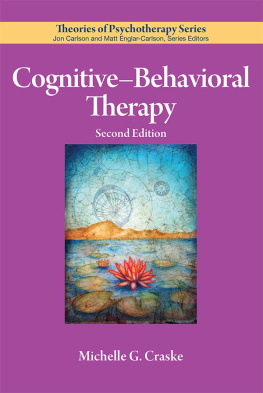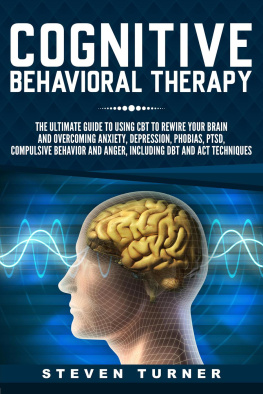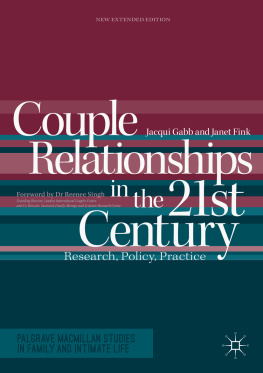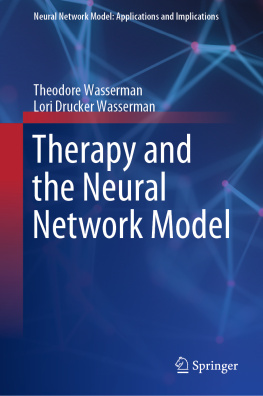Janet Reibstein - The Intercultural Exeter Couples Model: Making Connections for a Divided World Through Systemic-Behavioral Therapy
Here you can read online Janet Reibstein - The Intercultural Exeter Couples Model: Making Connections for a Divided World Through Systemic-Behavioral Therapy full text of the book (entire story) in english for free. Download pdf and epub, get meaning, cover and reviews about this ebook. year: 2020, publisher: Wiley Blackwell, genre: Home and family. Description of the work, (preface) as well as reviews are available. Best literature library LitArk.com created for fans of good reading and offers a wide selection of genres:
Romance novel
Science fiction
Adventure
Detective
Science
History
Home and family
Prose
Art
Politics
Computer
Non-fiction
Religion
Business
Children
Humor
Choose a favorite category and find really read worthwhile books. Enjoy immersion in the world of imagination, feel the emotions of the characters or learn something new for yourself, make an fascinating discovery.

- Book:The Intercultural Exeter Couples Model: Making Connections for a Divided World Through Systemic-Behavioral Therapy
- Author:
- Publisher:Wiley Blackwell
- Genre:
- Year:2020
- Rating:4 / 5
- Favourites:Add to favourites
- Your mark:
- 80
- 1
- 2
- 3
- 4
- 5
The Intercultural Exeter Couples Model: Making Connections for a Divided World Through Systemic-Behavioral Therapy: summary, description and annotation
We offer to read an annotation, description, summary or preface (depends on what the author of the book "The Intercultural Exeter Couples Model: Making Connections for a Divided World Through Systemic-Behavioral Therapy" wrote himself). If you haven't found the necessary information about the book — write in the comments, we will try to find it.
Janet Reibstein: author's other books
Who wrote The Intercultural Exeter Couples Model: Making Connections for a Divided World Through Systemic-Behavioral Therapy? Find out the surname, the name of the author of the book and a list of all author's works by series.
The Intercultural Exeter Couples Model: Making Connections for a Divided World Through Systemic-Behavioral Therapy — read online for free the complete book (whole text) full work
Below is the text of the book, divided by pages. System saving the place of the last page read, allows you to conveniently read the book "The Intercultural Exeter Couples Model: Making Connections for a Divided World Through Systemic-Behavioral Therapy" online for free, without having to search again every time where you left off. Put a bookmark, and you can go to the page where you finished reading at any time.
Font size:
Interval:
Bookmark:
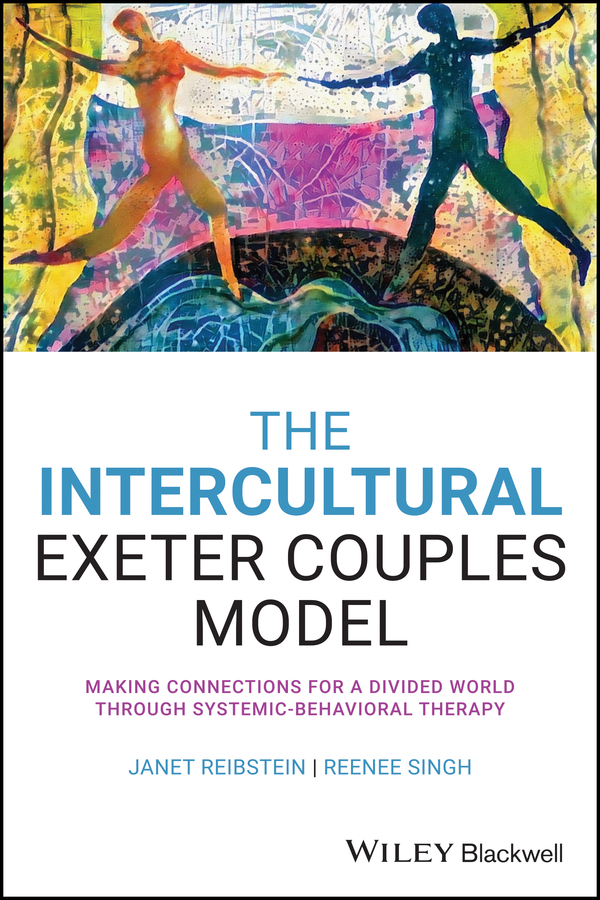
Janet Reibstein
Reenee Singh

This edition first published 2021
2021 John Wiley & Sons Ltd
All rights reserved. No part of this publication may be reproduced, stored in a retrieval system, or transmitted, in any form or by any means, electronic, mechanical, photocopying, recording or otherwise, except as permitted by law. Advice on how to obtain permission to reuse material from this title is available at http://www.wiley.com/go/permissions.
The right of Janet Reibstein and Reenee Singh to be identified as the authors of the editorial material in this work has been asserted in accordance with law.
Registered Offices
John Wiley & Sons, Inc., 111 River Street, Hoboken, NJ 07030, USA
John Wiley & Sons Ltd, The Atrium, Southern Gate, Chichester, West Sussex, PO19 8SQ, UK
Editorial Office
111 River Street, Hoboken, NJ 07030, USA
For details of our global editorial offices, customer services, and more information about Wiley products visit us at www.wiley.com.
Wiley also publishes its books in a variety of electronic formats and by printondemand. Some content that appears in standard print versions of this book may not be available in other formats.
Limit of Liability/Disclaimer of Warranty
While the publisher and authors have used their best efforts in preparing this work, they make no representations or warranties with respect to the accuracy or completeness of the contents of this work and specifically disclaim all warranties, including without limitation any implied warranties of merchantability or fitness for a particular purpose. No warranty may be created or extended by sales representatives, written sales materials or promotional statements for this work. The fact that an organization, website, or product is referred to in this work as a citation and/or potential source of further information does not mean that the publisher and authors endorse the information or services the organization, website, or product may provide or recommendations it may make. This work is sold with the understanding that the publisher is not engaged in rendering professional services. The advice and strategies contained herein may not be suitable for your situation. You should consult with a specialist where appropriate. Further, readers should be aware that websites listed in this work may have changed or disappeared between when this work was written and when it is read. Neither the publisher nor authors shall be liable for any loss of profit or any other commercial damages, including but not limited to special, incidental, consequential, or other damages.
Library of Congress CataloginginPublication data is available
9781119668411 (Hardback); 9781119668404 (Paperback); 9781119668428 (ePDF); 9781119668435 (epub)
Cover Design: Wiley
Cover Image: Bruce Rolff/Shutterstock
The Model and Its Development
Introduction
The public debut of the Intercultural Exeter Model ( IEM ) at the annual conference of the UK's Association for Family Therapy in 2017 was in the year that Prince Harry and Meghan Markle announced their engagement, and, with that, came a worldwide, populist interest, an interest not ever before so publicly recorded in the area of intercultural couples. This striking public attention put the focus on something we, the authors, along with others working in this field for years already knew: there is a dearth of either research on, or reports of, best clinical practice about working with couples of this sort. How do you do it and do it well?
Indeed, most clinical models of couples work do not even nod to the contribution culture will make to any of the myriad presenting conditions people need help with. Those clinicians working systemically will know that an exception has been within systemic theorizing (e.g., Falicov, ). However, despite this admirable emphasis on cultural context and consequence, therapists need more. There has been no systematic effort to translate systemic ideas that take into account a cultural perspective into working with couples. None has existed to enable the clinician both to focus on and utilize data about cultural differences in a theorized way, or even in a way that incorporates other existing clinical tools to adapt them specifically to address cultural differences.
This is a significant and gaping hole in working with couples who come from different cultures. That is the raison d'tre for this book: it describes a method that helps clinicians to do so.
There is another purpose to the book: to join up best practice, to make the systemic behavioral and the behavioral systemic. There has been work with couples in which both behavioral/ cognitive behavioral therapy ( CBT ) approaches and systemic ones have had much to contribute to ameliorate distress in a variety of conditions (cf. Reibstein & Burbach, ).
Indeed, specifically in the treatment of depression the value of both approaches was enshrined by the UK's NICE ( National Institute for Clinical Excellence ) Guidelines in 2009. In ), was in fact developed to do this.
The impact of cultural differences began to emerge as the EM evolved both within its original clinic. But this was increasingly more pertinently visible outside, in settings across the UK where diversity and its impact began to emerge among the clients presenting at practitioners' offices. And as it did, it became clear that the question of the impact of culturesomething we intuitively know to be the casestill remained unaddressed. In consequence we began adapting the EM to begin to fill that hole, yielding the IEM.
The IEM now addresses, front and center, using best couple practice techniques, how to work explicitly with the differing cultural aspects of people's lives. In our global world, in a world of multicultural families and couples, in which children of couples who partner across cultures increasingly are raised within a hybridity of cultures, this is imperative. To avoid doing this is tantamount to avoiding something as basic as age, gender, abilities, sexualities, or income, language or educational constraints or privileges: in other words, the very seeds of people's actual, lived, daily lives. For couples, most essentially, the meshing or clashing of the cultural can be the often unexamined heart of misunderstandings instead of becoming the source of great enrichment.
Our current rhetoric of love does not really allow the consciousness of difference to become part of our discourse around intimate relationships. These result in a denial of the actuality of romantic life: conflict is an inevitable fact of couples' reality. As John Gottman's research has so clearly shown (cf. Gottman, ), all couples need to learn how to manage conflict between themselves. Leaving out how to think about and work with the cultural difference within a couple in a couple training, therefore, is at the very least ignorant. At its worst, it's irresponsible. Hence the IEM, the evolution of the EM.
There are two urgent, major, and progressive themes calling ever more loudly and persistently through current developments in therapy theory, practice, and trainingparticularly within work with families and couples. Firstly, there is the need to work sensitively, wisely, and constructively and be attentive to differences in cultures within relationships that present in the therapy room. Secondly, there is the need to become able to work within evidencebased practices that can cut across different schools of psychotherapy. That is, to be aware, or part of, a third wave of psychotherapy practice that unites themes and practices across formerly divided trainings. A currently wellequipped clinician should be able to employ and understand techniques and ideas from a range of therapies, using these in a way that is coherent with their basic therapeutic training and stance. A currently wellequipped clinician should be able to understand and be alert to nuances of cultural differences that will necessarily be playing out within couples and families that present for therapy, or that an individual brings in their individual narrative as it may unfold within the therapy room for individual therapy. Yet there has been no single coherent model of therapy theory, training, and practice, until now, that unites these two major themes. There is still no training that can thus prepare a therapist to practice in this way.
Next pageFont size:
Interval:
Bookmark:
Similar books «The Intercultural Exeter Couples Model: Making Connections for a Divided World Through Systemic-Behavioral Therapy»
Look at similar books to The Intercultural Exeter Couples Model: Making Connections for a Divided World Through Systemic-Behavioral Therapy. We have selected literature similar in name and meaning in the hope of providing readers with more options to find new, interesting, not yet read works.
Discussion, reviews of the book The Intercultural Exeter Couples Model: Making Connections for a Divided World Through Systemic-Behavioral Therapy and just readers' own opinions. Leave your comments, write what you think about the work, its meaning or the main characters. Specify what exactly you liked and what you didn't like, and why you think so.



